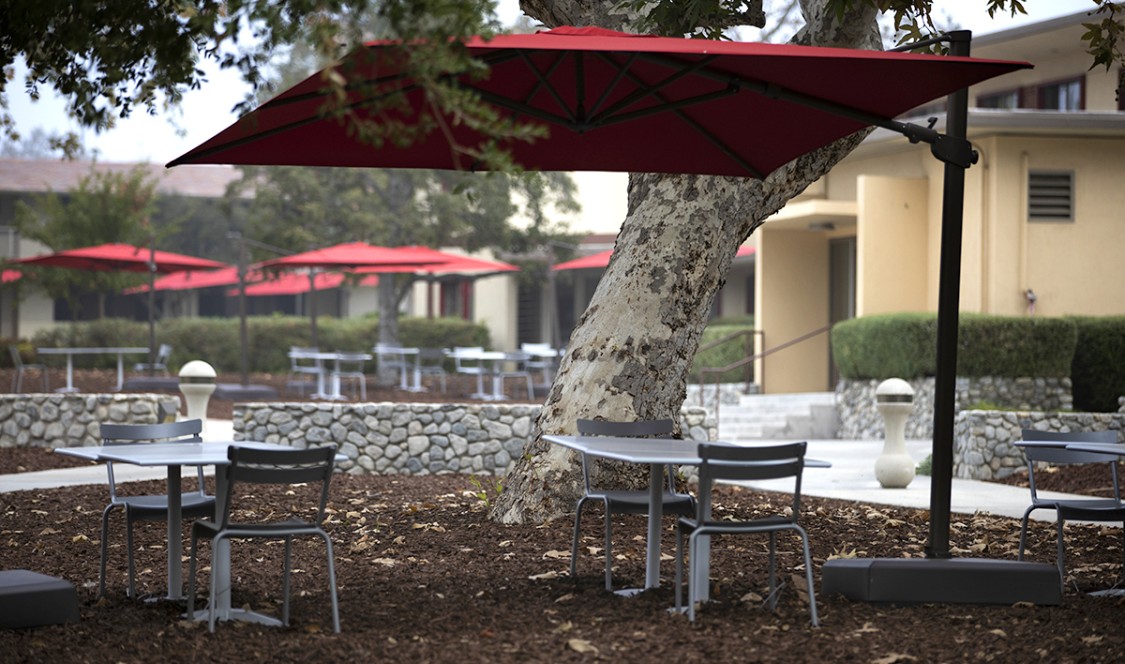A sense of urgency compelled Andrew Bradjan ’22 to join CMC’s sustainability effort shortly after arriving at CMC as a first-year student.
“Climate change is an issue we need to tackle as soon as possible,” said Bradjan, a government and economics major, who works as the CMC Building and Energy Management Intern. “I knew I wanted to join a club or organization that would allow me to promote sustainability on campus because I wanted to make a difference that I could see when I walked around CMC.”
Bradjan is currently making a difference as a student member of ACTS, CMC’s sustainability committee formed in February 2020 to increase environmental sustainability and awareness throughout the College. ACTS (Awareness, Conservation, Tracking, and Sustainability), is key to the College’s accelerated effort, led by CMC President Hiram Chodosh, to move up the current carbon neutrality target date.
The effort builds upon work done by former CMC President Pamela Gann, who in 2007 launched the campus-wide effort to achieve climate neutrality. One of the College’s first commitments was to ensure that all new buildings and major renovations would be designed for energy and water usage efficiency, among other qualities intended to maximize sustainability. Most recently, the Mid-Quad dormitory additions were built to LEED silver standards, while the Roberts Pavilion and Kravis Center both achieved LEED gold certification in 2016 and 2013, respectively.
Other recent sustainability highlights include: 40% of CMC’s grass replaced with drought-tolerant turf; all lightbulbs are LED; all Facilities and Campus Services vehicles are electric-powered.
CMC’s accomplishments in sustainability have been recognized by the Princeton Review’s Guide to Green Colleges, and the Association for the Advancement of Sustainability in Higher Education.
When Kristin Miller took on her role as CMC’s Sustainability Coordinator in 2015, one of her initial goals was to track CMC’s historical and yearly utility usage and conservation efforts. That data is published on the ACTS website and employed to monitor CMC’s progress toward sustainability, as well as to increase campus-wide awareness.
Miller also worked to create a 5C collaborative effort with sustainability offices across the campuses; formalized student input via the CMC Environmental Affairs committee; and established a sustainability fund to support student-led, on-campus projects designed to reduce consumption, such as the Greenware (checkout serve ware) and ReRoom programs.
“It’s essential that our students have a stake in how we approach sustainability at CMC,” Miller said, adding that it was student advocacy that led CMC administration to accelerate the College’s carbon neutrality date.
“Students have demonstrated ownership over this issue and take on vital roles such as EcoReps, peer educators who educate students in the dorms about resource conservation,” Miller said.
Faculty members with scientific expertise have also joined the effort, including Branwen Williams, who is CMC’s George R. Roberts Associate Professor of Environmental Biology. Williams’ ocean-focused research has led her to the Arctic, where she has seen firsthand the harmful effects of climate change.
Williams said it was an “easy yes” when she was invited to join ACTS in February 2020.
“I see what’s projected to happen in our world and the way climate change disproportionately impacts people,” she said. “I’m trying to help mitigate that through my teaching, research and service, as part of CMC’s initiative to reduce the campus’ carbon footprint.” said Williams.
This commitment extends to her classroom. In Fall 2020, Williams and her colleague Prof. Mary Evans harnessed the creativity and initiative of their students in the class they co-taught “Modeling Climate Change through Economic and Natural Science Lenses.”
Students applied what they learned in class to complete group projects, which were proposals on ways to reduce CMC’s carbon footprint.
“They had to justify their projects with a cost-benefit analysis that not only showed how much carbon would be mitigated, but also each project’s feasibility,” Williams said, noting that two of the class projects were ultimately selected and brought to the ACTS committee for consideration.
This type of synergy between faculty and students is key to CMC’s sustainability effort, according to Miller.
“Through teaching and research, we can put practices into action. We can do things as an institution of higher education to play a key role in mitigating climate change,” Miller said. “Through our curriculum, research opportunities for faculty and students, as well as internships, we should be able to integrate and increase environmental sustainability across campus and in our community, not just on campus, but also in the city of Claremont. We can make an impact on our immediate community and to Los Angeles County, and beyond.”
For Williams, CMC’s commitment to campus sustainability through tangible infrastructure efforts such as reducing energy and water use provides hope. “Climate change is human-caused, which means humans can solve it,” Williams said. “It’s not like an asteroid hit. We caused climate change, and we can fix it. It’s a choice we’re making.”
—Anne Bergman
Learn more about CMC’s sustainability efforts and progress at: https://sustainability.cmc.edu

